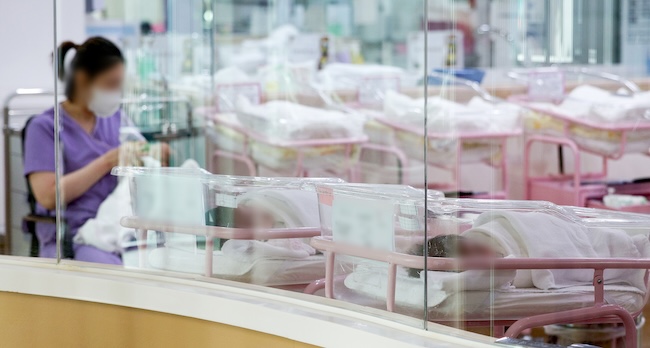
This file photo taken Feb. 28, 2024, shows an official taking care of a baby at a postnatal care center in Seoul. (Image courtesy of Yonhap)
SEOUL, Aug. 28 (Korea Bizwire) – South Korea’s total births fell to a fresh low in 2023, while the proportion of babies born to mothers who were unmarried reached an all-time high, data showed Wednesday.
A total of 230,000 babies were born last year, down 7.7 percent from a year earlier, according to the data compiled by Statistics Korea.
It is the fewest number since the agency began compiling relevant data in 1970.
The fertility rate, the average number of children a woman bears in her lifetime, also came to a fresh low of 0.72 in 2023, down from 0.78 the previous year.
It was much lower than the replacement level of 2.1 that would keep South Korea’s population stable at 51 million. The figure, which came to 4.53 in 1970, fell below 1.0 for the first time in 2018.
Of the newborns, 10,900 babies, or 4.7 percent, were born to mothers who were unmarried or not in a civil partnership last year.
It was the highest level since the agency began compiling relevant data in 1981.
Out-of-wedlock births came to around 9,300 in 2013 and had fallen to 6,900 in 2020 but have been on the rise, reaching 7,700 in 2021 and 9,800 in 2022.
Officials pointed to changing social norms as a major reason, though out-of-wedlock births are quite rare in South Korea.
The average age of women giving birth last year reached a record high of 33.6, up by 0.1 from a year earlier. The average age of fathers was 36.1.
Among the newborns, 60.2 percent were a couple’s first child in 2023, up 2 percentage points from a year earlier, while the proportion of a second child fell 1.4 percentage points to 32.3 percent, the data showed.
(Yonhap)






